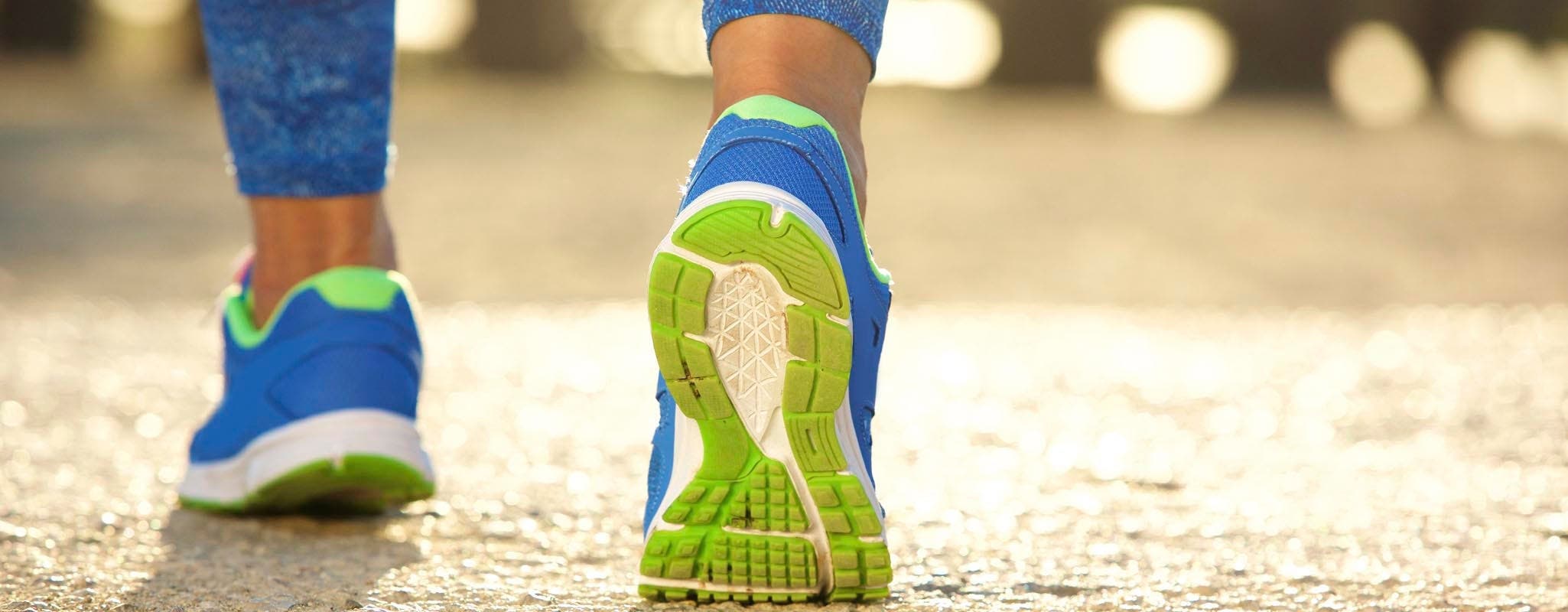A Guide to Walking More


"Because it's a natural movement, there's little stress on your joints," says fitness trainer Neil Elliot. "Yet walking works so many muscle groups." Uphill walks work our calf muscles, hamstrings and buttocks. Downhill, it's our thighs (quads) and hamstrings. On level ground, our abdominals and lower back. Naturally, legs get a great workout, too.
Where to walk
Walk anywhere you find it enjoyable to do so. In the park, by the sea, around your local neighbourhood. "You tend to walk further outdoors," says fitness instructor Julie Gupwell. "It's more refreshing. You can walk on sand, dirt, pavement, up hills - and vary the circuit daily."
Sports dietitian Dr. Helen O'Connor suggests parking your car further away than you need to. Walk to work, or to the furthest bus stop or subway station. Take the stairs. Or get off the elevator one floor early and walk that extra flight. Give yourself time to walk - leave home a half hour earlier or take 10 extra minutes to walk to the mall.
Elliot also suggests stepping on a treadmill and walking indoors: "That way, there's no fear of being chased by dogs or run over by cars!"
How hard and long to walk
Start with up to a half-mile walk, three to four times a week. Then extend the frequency, aiming for a 30- to 60-minute walk each day of the week. Gradually raise the intensity by walking on inclines, with hand weights or on wet sand.
As you build your level of fitness, steadily climb to a comfortably challenging pace. You should still be able to hold a conversation even though you're breathing a lot harder. At the end of your session you should be tired and sweaty, but not exhausted. That's when your body's successfully burning calories. Elliot also suggests trying different treadmill programs. Challenge yourself by adjusting incline and speed.
What to wear
- Comfortable clothes made with fabrics that draw sweat away from the skin. Wear layers, and peel them off as you warm.
- Athletic shoes that aren't overly snug, because your feet will swell as you walk. Cushioning under the heel and forefoot are important, as is flexibility, so the ball of your foot moves freely.
- Socks in fibres that evaporate sweat and prevent blisters. Try double-layered or padded socks for walks on hard ground.
- A pedometer to measure steps taken and walking distance.
- A water bottle. Drink before you start, and then every half hour, more often if you're sweating.
- Sun protection like a hat, plus a layer of waterproof sunscreen with an SPF between 15 and 30.
- Identification and a few dollars, in case of an emergency.
- Your favourite tunes on a cell phone or portable music player.
Technique tips
- The walking step is a rolling motion. Strike the ground with your heel, roll through, then push off with your toe. If your feet land flat, your shoes are probably too stiff.
- Watch your posture. Imagine that you have a piece of string coming up through the top of your head - this will straighten you up in seconds.
- Tighten your tummy. It supports your lower back and keeps abdominal muscles strong.
- Swing your arms naturally; it will help give you rhythm.
- To walk faster don't lengthen your stride. Take shorter, quicker steps
